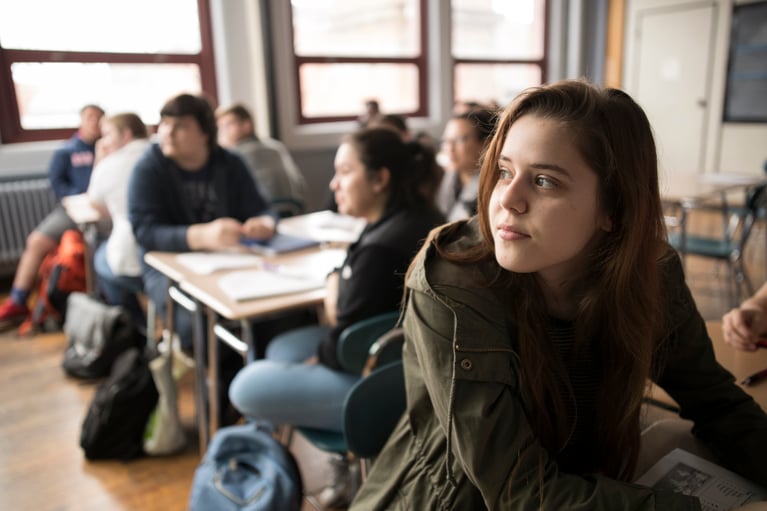
We awoke this morning to learn of another horrific act of violence. Students and teachers arrived at school as news was breaking about the attack by a gunman on an outdoor concert in Las Vegas on Sunday evening. We mourn the victims and we are filled with sadness for those who have lost friends and loved ones.
As we write this, crucial details of the massacre are emerging. We may not have a full picture of what happened for several days or even weeks. It is important to acknowledge that at a time when so many details remain unknown, the way we respond to the stream of often unverified information and the language we use to talk about the tragedy both matter.
Students are no doubt coming to class today with questions. Some feel fear, some anger and sadness, and most, terrible confusion. Classrooms and schools are places where we learn to “stop and think,” spaces that acknowledge both the head and the heart, spaces we practice playing, listening, learning, and working together with respect and peace, not in spite of our differences, but in light of them. Classrooms must also be places where students learn to absorb and respond to information from the news and social media critically and thoughtfully.
The media coverage from Las Vegas has been appropriately tragic. In the coming days we will no doubt learn about the positive ways that individuals and communities responded. Civil society depends on acts of compassion. These and other moments of upstanding are important to share with your students so that they have a better understanding of the range of human choices.
For teachers, the following strategies might be of use immediately following a tragedy such as the shooting in Las Vegas.
- Let your students know that your classroom is a safe space. Begin with a brief contracting activity if you have not already forged that safe space. Then follow with acknowledgement. This is not a moment to go straight to the “head” or to cognitive work. Give your students a few moments to reflect and to write some of their feelings and questions. They could then share these with a peer. You might use the following writing prompt:
Events like the violent attack in Las Vegas are disturbing and painful to learn about. They prompt us to ask many questions, some of which may not have an answer. What questions does this event raise for you? What feelings does it provoke?
- Do an activity that is focused on acknowledgment and commemoration. Have students think about the ways that people and events are remembered and memorialized. Give them art supplies—clay or markers and crayons and paper. Allow them to create something from their imaginations. For some students, they might choose to create a poem or a song, or continue to write in their journals. Giving students the opportunity to view each other’s creations in a gallery walk might spark deeper reflection, conversation, and understanding of the range of responses within the class.
- After they have had some time to process these events affectively, you might help them begin to wrestle with what happened. Perhaps begin with a K-W-L chart to help students distinguish fact from fiction and evaluate their sources of news and information. Remember to revisit the K-W-L chart in the coming days and weeks to add and clarify information as it becomes available.
These activities will help you to think of other lessons that you need. You might, for example, explore stereotyping and the way that the actions of a group of extremists can be conflated with those of others who have nothing to do with these horrific crimes. We urge you to focus on discussion over debate, or potentially pitting students against each other. Activities such as save the last word for me and learn to listen, listen to learn are particularly useful. It is important that multiple points of view can be heard and respected.
The last few weeks, indeed months, have been full of devastating news, including natural disasters such as the hurricanes and earthquakes in the US, Caribbean, and Mexico; of ethnic cleansing in Myanmar; and of the threat of nuclear war with North Korea. Recent polls show that our faith in our political leaders and their ability to mount effective responses to these enormous events is historically low.
Our students are likely feeling the collective weight of these troubling events. We understand the enormity of the task facing teachers who are already juggling numerous responsibilities and are yet again charged with helping young people make sense of devastating events in the world around us. It is easy to feel disheartened, but we believe that making the classroom a community where students can learn, reflect, and respond to the world around them together is an essential part of taking care of our young people. Our classrooms are places where young people—and the adults who teach them—can build civic trust and faith in each other as a learning community and as a group of citizens.

